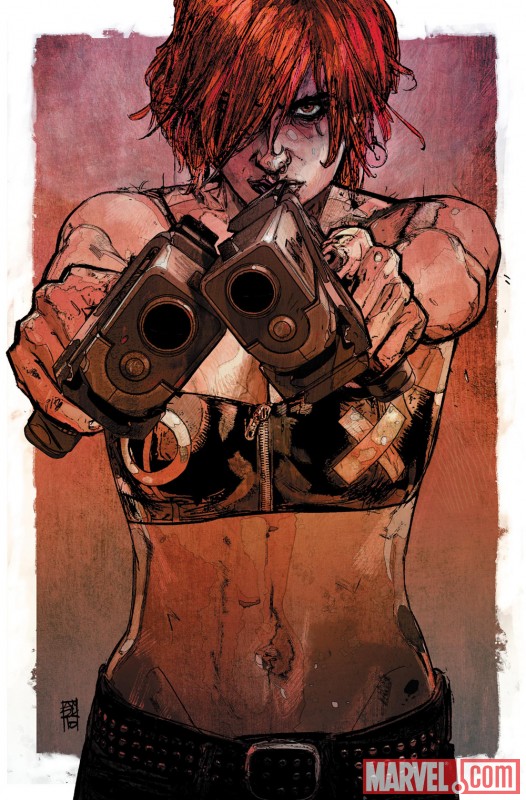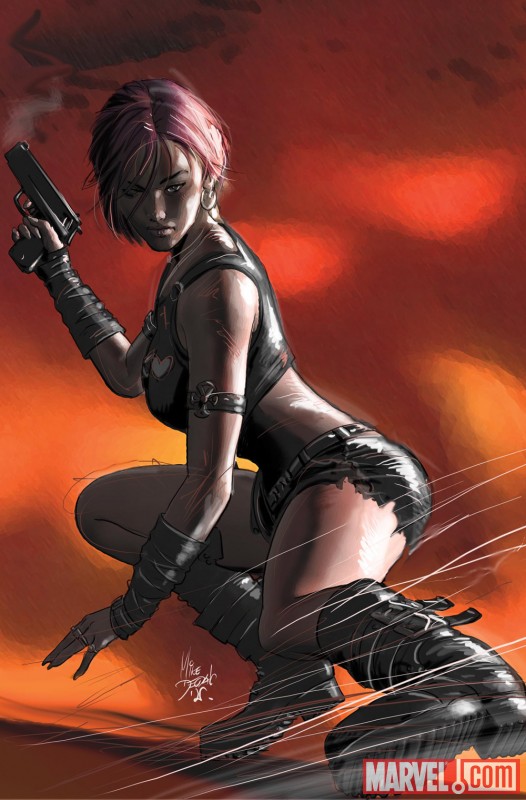Scarlet exists as a comic/movie/novel hybrid. That is to say, that the narrative and art are at times only one of these and others all three at once. Bendis narrates the story but using a movie and comic no-no... he breaks the fourth wall. If you're unfamiliar with this term it can most easily be defined in movie terms. In Ferris Buller when Ferris turns and talks to the audience he is breaking the fourth wall, which is the movie screen. This is very uncommon in comics for several reasons.
 1) It doesn't work. That's the biggest issue with it in comics is that it doesn't have a delivery behind the performance. It relies on the reader to deliver the lines to themselves making it very ineffective.
1) It doesn't work. That's the biggest issue with it in comics is that it doesn't have a delivery behind the performance. It relies on the reader to deliver the lines to themselves making it very ineffective.
2) Its lazy writing. It may work for Ferris Buller, but most of the time it's for a cheap joke or to tell the reader important information that they wouldn't otherwise have. If you're a fan of the fourth wall joke then by all means continue reading anything Deadpool since the character can't go two seconds without that joke. For important information relayed to the reader, look at it this way: If this information is so vital to the story at hand why couldn't the writer find another way to present the information? Well they're either lazy or lack the skill to do so.
So why does breaking the fourth wall work in Scarlet? Well, at first it doesn't. The issue and story begins without the reader as Bendis moves the story forwards and backwards at the same time. But it's a rough beginning that is very off putting, which is why most writers don't use it. As the story progresses though the fourth wall narrative it becomes less choppy and finds a pacing and flow that grooms the reader to understand it. The second narrative technic that Bendis uses is the montage. Which can work in comics but again isn't a common technic. Montages are used to convey simple yet relevant information in a short amount time. When it comes to comic books, the writer isn't usually pressed for pages and can take their time. Bendis effectively uses a montage to show unique and funny moments of Scarlet's life that build her as a character.
The second narrative technic that Bendis uses is the montage. Which can work in comics but again isn't a common technic. Montages are used to convey simple yet relevant information in a short amount time. When it comes to comic books, the writer isn't usually pressed for pages and can take their time. Bendis effectively uses a montage to show unique and funny moments of Scarlet's life that build her as a character.
Where does the comparison to the novel come in? Simply put, if we removed the art and took Bendis' script as is, it would read as a novel. It has setting; it has a narrative and gives the characters history much like a book. Even the way Scarlet talks and presents information is as if it were a novel.
The fact is Bendis manages to merge several narrative styles smoothly to produce an interesting experiment that in a way forces other writers to up their game. This issue changes what comics can do, but more importantly it shows what comics can be. Time will tell what the true effects of Scarlet truly are, but for now this issues stands out as a unique comic experience.